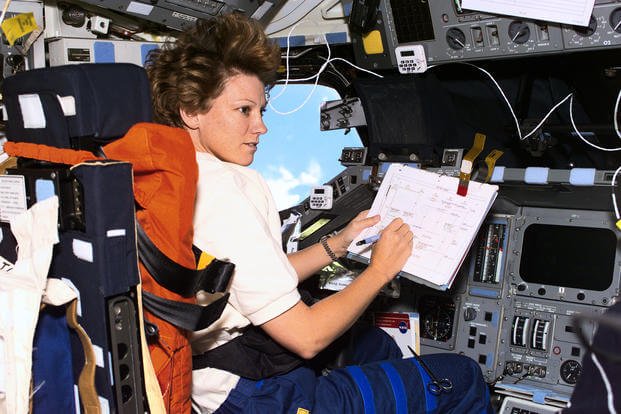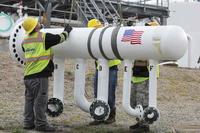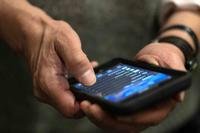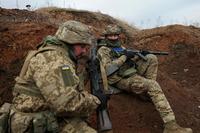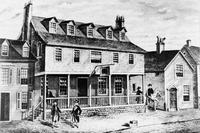RENO, Nev. -- The first woman to pilot a space shuttle touched down at the University of Nevada, Reno on March 21 to remind women there is no glass ceiling in space.
NASA astronaut Eileen Collins' visit to the university's Women in Space event, a family-friendly gathering during Women's History Month that celebrates the world of aerospace and provides a glimpse into possible career options involving aviation or space. Over 500 visitors of all ages attended.
The centerpiece of the event was an educational keynote talk with Collins, who was the first woman to pilot a space shuttle on NASA's 1995 STS-63 mission, flying the shuttle Discovery with a crew that included Russian cosmonauts.
Collins said space is key to moving society forward. "I think the most important issue taking place in the world today is the mission of space exploration," she said. Before sharing a detailed reflection on the past and present of space travel, Collins shared how she first fell in love with the idea of flying through the sky.
She said her parents were instrumental role models in her journey to become a pilot, with her mother Rose Collins affirming her identity as a one-of-a-kind person and her father James Collins encouraging her to forge her own path instead of following the crowd.
She said she appreciated her mother taking her on trips to the library during her youth in Elmira, New York. With books such as "The Stars at Noon," an autobiography by World War II Air Force Pilot Jackie Cochran, she built an interest in aviation. "I didn't really have the money to take flying lessons when I was younger. So I learned through books," she said.
So Collins committed to the dream, saving money from part-time jobs to pay for flying lessons at age 19.
"I like to tell young people, have faith in yourself, have confidence in yourself. Sometimes, just taking that first step is the hardest thing," she said.
"That summer, I flew my first solo. I joined Air Force ROTC in college, and the Air Force paid for my tuition. I just happened to be there at a time when there was a test program for women in the Air Force," Collins noted.
There were 40 students in the program, 36 male and four female, Collins said. Women stood out as an uncommon sight among the 500 pilots on the base.
"How did we get through that year? Well, it turned out the program was successful because the women flew just like the men. After a couple years, it was determined successful and women were integrated into pilot training," Collins said.
"Not only did we have to get through for ourselves, because we wanted to be the best pilots we could be to graduate -- also, how we did was going to determine if women that followed us would be able to fly. So there was a lot of pressure on us," she said.
"In 1990, I was now eligible to apply to the astronaut program. So I was very fortunate to be asked to join the team at NASA," Collins said, adding she said she enjoyed the culture there.
"I never felt different because I was a woman. I think women were accepted as part of the team," she said. "We all had a commitment to exploring space. It didn't matter what you looked like, it mattered how you performed and whether you were dedicated."
Her STS-63 mission was one of four trips to space for Collins. "I was lucky to fly in space four times and to work on this great team at NASA. So, I would say that dreams really do come true. There were a lot of bumps along the road, a lot of failures for me along the way. But I eventually made it to my dream of going in space."
Collins told her audience what going into space is like, using her flight on STS-114 in August 2005 as an example. That flight aboard Discovery was the first mission since the loss of the shuttle Columbia and its crew on Feb. 1, 2003.
The hours before launch included "talking to the Launch Control Center, checking your gear, running procedures, watching the clock countdown and you get down to 10, nine, eight, seven. At T-minus six seconds, the main engine's light and it sounds like this big rumble and the whole thing starts shaking and it sounds like you're in a room on fire."
The ascending rocket slammed the contents of the cabin around aggressively, including Collins herself.
"I remember thinking, 'I wonder why they made the switches so big in the shuttle cabin.' They were big because they would be hard to press otherwise, due to how much the cabin bumped around," she noted.
"Usually, it's about 7½ million pounds of thrust pushing 6½ million pounds of mass off of Earth's gravity," Collins said. "While in launch, we go up to three g."
That's three times Earth's gravity. "So let's say you weigh 100 pounds on Earth," she said. "If you could stand on a weight scale during the shuttle launch, it would say 300 pounds because that's how much force you have on your body as you launch into space -- in primarily the last two-thirds of the launch."
She continued. "I'm doing all my procedures and my flight engineer who sits behind me," Mike Foale, the first British person to perform a spacewalk, “said to me, 'Eileen, stop working so hard. Look out the window. You're in space.'"
Collins gazed out at her first space sunrise, which she said looked like a rainbow. She said what most stood out to her, though, was being able to visualize how the Earth is round.
"There's something on the space station called gyroscopes," she said. "They help the station maintain its altitudes. There are four of them. One of them had a catastrophic failure. So we were asked to change out the broken gyroscope. It weighs 600 pounds on Earth, but in space, it's weightless."
She said the broken gyroscope was brought back "to be evaluated."
How did Collins stay in shape on her space missions? Through an advanced resistive exercise device, which allowed astronauts to perform exercises with bungee cords for two hours a day.
With a separation maneuver and a series of altitude adjustments, the shuttle set off from the space station once its mission ended, heading back to Earth at 25 times the speed of sound. The Discovery landed at Edwards Air Force Base out in Southern California and the astronauts got out and adjusted back to Earth's atmosphere.
"The mission was very successful. It was kind of sad coming back, because we had worked on this flight for so long," Collins said.
Collins explained, "The space shuttle was retired 12 years ago. But NASA still is operating at full speed with a full budget."
NASA is also still working with the Russian space program, she noted, as well as Boeing, which is sending its Starliner spacecraft into space later this summer.
"NASA would like to turn low-Earth orbit over to the commercial companies," Collins noted. "So now we are in contracts with SpaceX, which launches their Falcon 9 rocket to and from the space station."
In the near future, instead of NASA owning the International Space Station, they will financially incentivize private companies to build new space stations, she said.
Another aspect of space travel will be tourism, she said. "It's very expensive now, but as time goes by, it's going to get cheaper, and it's going to be safer," she said. "We're going to have a better appreciation for planet Earth."
Meanwhile, "NASA will spend limited funding to go to deep space," she added. NASA is running the Artemis program, which involves "sending astronauts back to the moon -- not just to do what we did during Apollo, which was great -- but to take it one step further to build space stations and research stations on the moon and test the equipment that we will need to survive when we go to Mars someday," she said.
"I want a diverse group of astronauts, men and women with different heritages and people with different backgrounds," she said.
"I'd like you, especially the young people, to think about revolutionary inventions and discoveries that have taken place over human history that have made our lives better. You can go as far back as the printing press. And then we got the telephone. And then the car. Then we got airplanes, then computers, rockets and now we have satellites for communication and navigation," Collins said.
"And I wonder, what is the next big revolutionary change that will affect our lives? Some people say artificial intelligence. I think in the area of transportation, it is in propulsion, because when we discover -- and I believe we will -- another planet that is like Earth out there somewhere, we're going to want to go there.
"We certainly do not have the means to do that now," Collins said. "So someday I think some very smart person or team of people will invent a way to allow us to go farther, faster and higher."
Collins said the ultimate key to future space advances lies in unlimited imagination.
Collins' autobiography, "Through the Glass Ceiling to the Stars: The Story of the First American Woman to Command a Space Mission," is available from most booksellers.
(c) 2024 Elko Daily Free Press, Nev.
Visit Elko Daily Free Press, Nev., at www.elkodaily.com
Distributed by Tribune Content Agency, LLC.
